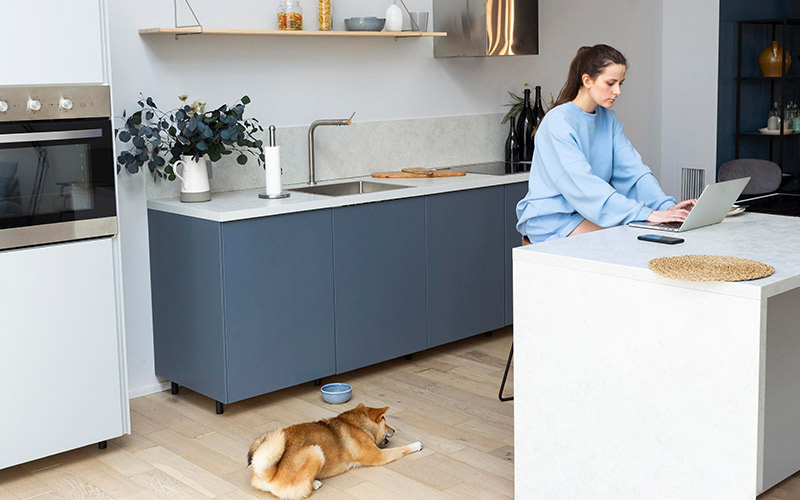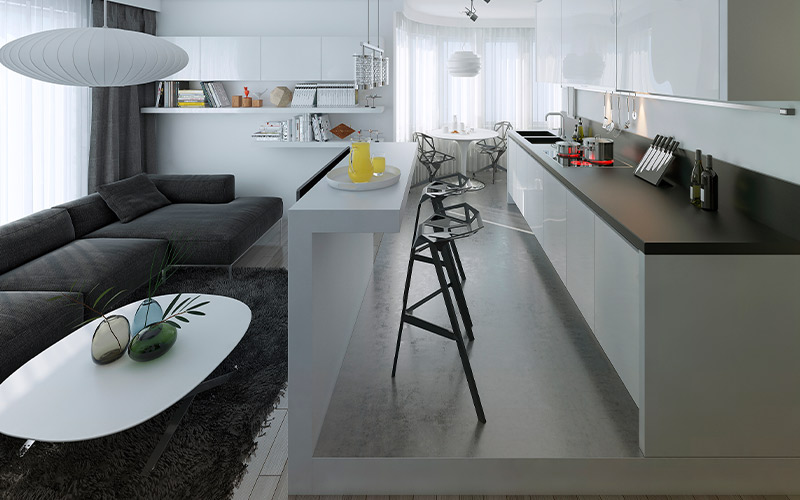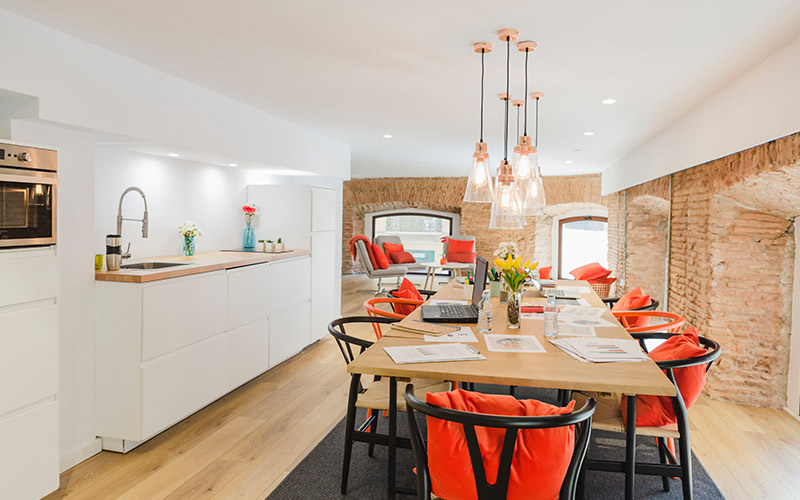
4 minute read
Is The Island In The Kitchen A Good Idea?
The heart of every home is undoubtedly the kitchen, where culinary magic happens and family bonds are strengthened. Over the years, kitchen designs have evolved to accommodate changing lifestyles and preferences. One such design trend that has gained popularity is the incorporation of an island in the kitchen. But is having an island in the kitchen a good idea? Let's delve into the pros and cons to help you decide if this kitchen design feature is a must-have or a potential headache.
Pros:
1. Additional Workspace:

One of the primary advantages of having a kitchen island is the extra countertop space it provides. This additional workspace comes in handy for meal preparation, especially when multiple people are involved in cooking. It allows for a more organized and efficient kitchen workflow. Make this a priority in your plan for kitchen interior design services in Kolkata.
2. Social Hub:
A kitchen island can serve as a social hub, creating a central gathering point for family and friends. Whether it's a quick breakfast, casual conversation, or even helping with meal prep, the island fosters a sense of togetherness and connectivity, making it an ideal spot for both daily activities and special occasions.
3. Versatility in Functionality:

Kitchen islands are versatile and can be customized to suit various functions. They can house additional storage, a built-in sink, or even a stovetop. This adaptability makes islands a flexible choice that can be tailored to meet the specific needs and preferences of the homeowner. You can customize yours with kitchen interior design services in Kolkata.
4. Aesthetic Appeal:
Beyond functionality, an island adds aesthetic appeal to the kitchen. It serves as a focal point, enhancing the overall design and style of the space. From a sleek modern look to a rustic farmhouse feel, islands come in a variety of designs that can complement your kitchen's theme.
Cons:
1. Space Constraints:

While islands provide extra workspace, they can also present space challenges, particularly in smaller kitchens. The addition of an island may make the kitchen feel cramped and hinder the flow of movement, leading to potential frustrations for the cook.
2. Cost Considerations:
Building a kitchen island, especially one with additional features like a sink or stove, can be a significant investment. Homeowners need to consider the cost implications and weigh them against the perceived benefits to ensure it aligns with their budget. Discuss budget at the very beginning with your interior designers in Kolkata.
3. Maintenance and Cleaning:
A kitchen island, with its additional surface area, requires more attention when it comes to cleaning. Crumbs, spills, and splatters may accumulate, and cleaning around appliances built into the island can be more time-consuming than traditional countertop spaces.
4. Design Cohesion:

An island should seamlessly integrate with the overall kitchen design. In some cases, an improperly placed or designed island may disrupt the harmony of the space. Achieving a cohesive look requires careful consideration of the kitchen's layout and style.
Conclusion
In the ongoing debate of whether an island in the kitchen is a good idea, the answer ultimately depends on your specific needs, kitchen size, and budget. When thoughtfully designed and integrated, a kitchen island can elevate both the functionality and aesthetics of your culinary space. However, it's crucial to weigh the advantages against the potential drawbacks to determine if this trendy kitchen feature is the right fit for your home. Whether you're looking to create a bustling social hub or enhance your cooking efficiency, the decision to island or not to island rests in your hands.

